9 Secrets for Cooking the Best Steak That Only Chefs Know
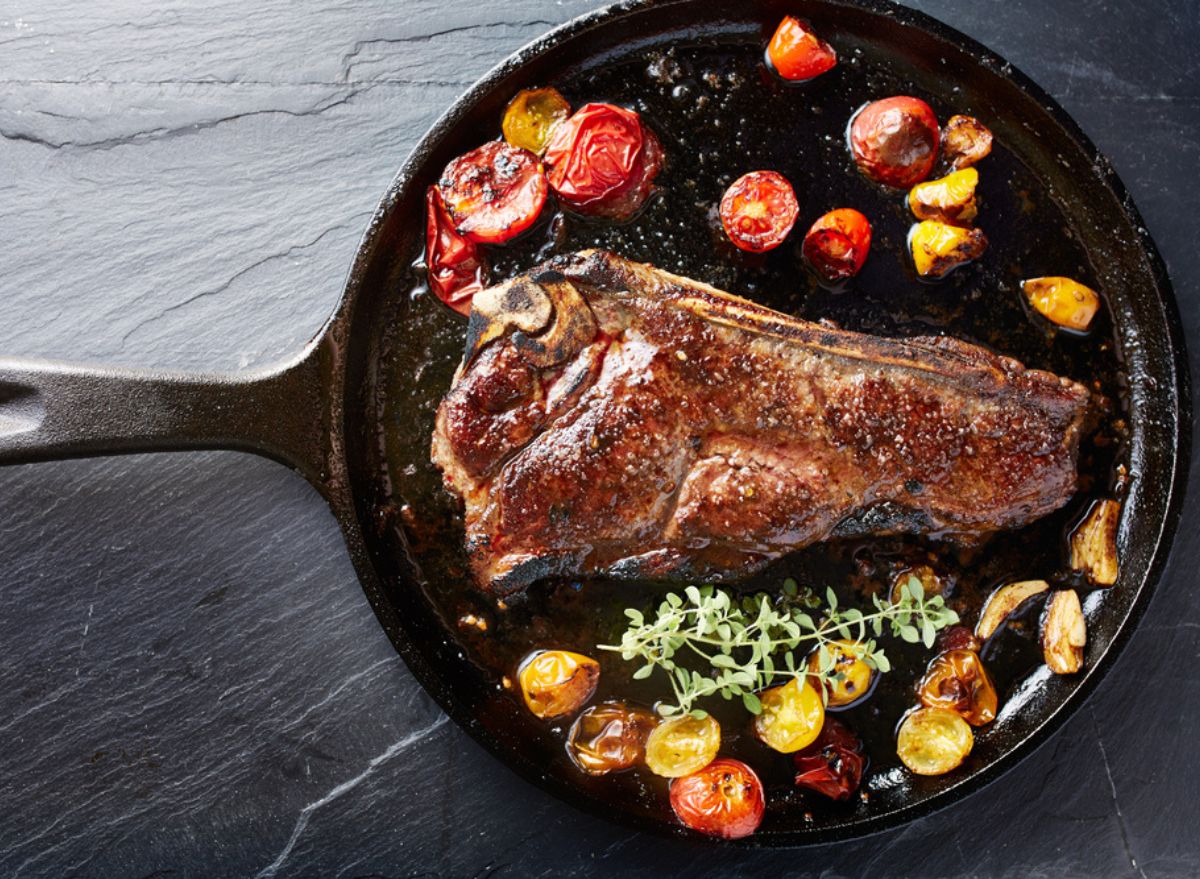
While digging into a delectable meal at your favorite steakhouse is surely a delicious experience, you don't have to always dine out in order to enjoy a juicy steak. In fact, cooking the best steak at home doesn't have to be such an intimidating experience—all it takes is knowing chefs' tricks of the trade.
We asked critically-acclaimed chefs from steakhouses around the country to share their top secrets so you can cook up the best steak at home. Here's what they had to say, and for even more chef cooking tips, check out these 10 Cooking Secrets Only Italian Chefs Know.
Choose quality meat.
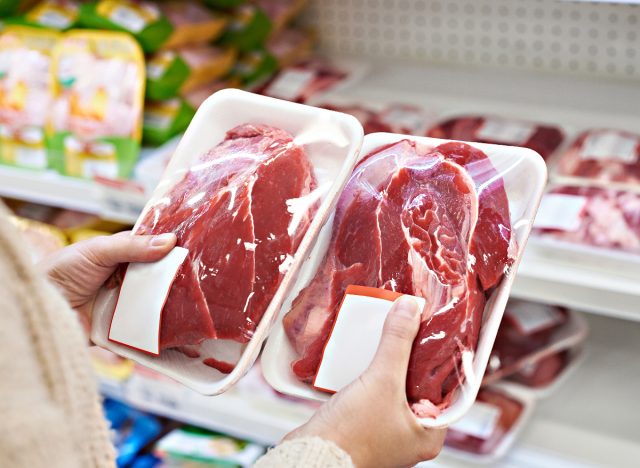
"The first step for cooking the perfect steak is to start with a great, quality piece of meat," says Chef Michael Tsarnas, executive chef of Gabriella's Italian Steakhouse.
Choosing the right cut of meat may seem daunting at first, but it can be simple if you know what you're looking for. Here's How To Choose the Best Steak at the Grocery Store, According to Experts.
Dry the steak out.
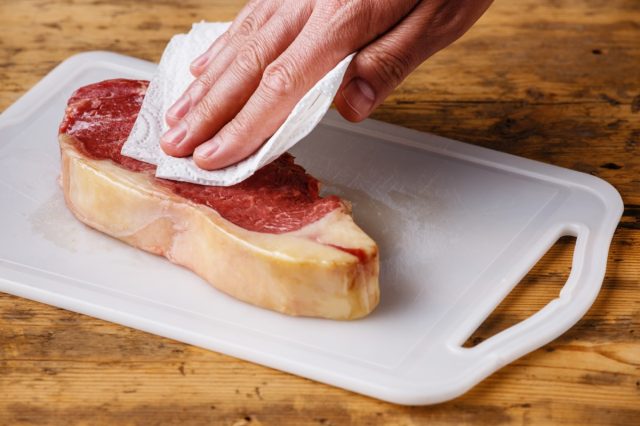
"Before cooking, you want to make sure the surface of the steaks has as little moisture as possible," says Chef Tsarnas. "You can dry them well with paper towels, or you can salt them and let them rest on a rack in the fridge overnight, bringing moisture to the surface and allowing it to evaporate. This helps you achieve much more efficient browning when searing!"
Prep for perfection.
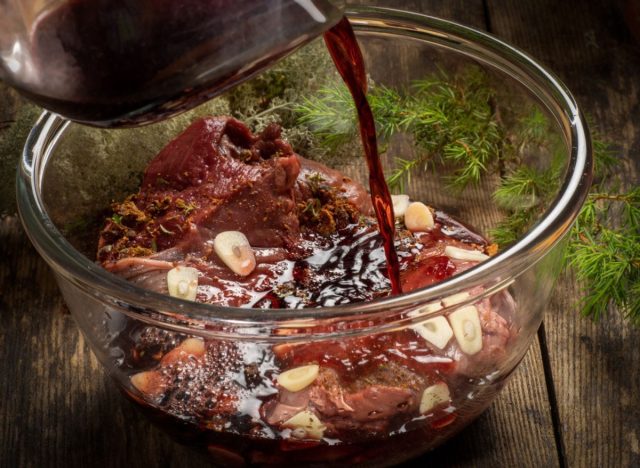
"The longer you let your beef marinate, the better, even up to 24 hours," says Chef Alex Reitz, chef and recipe developer for Beef. It's What's For Dinner. "Acidic marinades with vinegar or lime juice are best suited for more coarse cuts like flank steak. Just add olive oil and spices to your acidic base and you're good to go! Elevate more tender cuts of beef with dry rubs."
"Pro tip? You can use spices you already have in your pantry for added savings," he continues. "Warming spices like cumin, coriander, and allspice are on trend, work great on the grill, and pair well with strip steaks."
Looking for a tasty marinade to get you started? Here are the 5 Best Steak Marinade Ideas for the Juiciest Steak Ever.
Use the reverse sear technique.
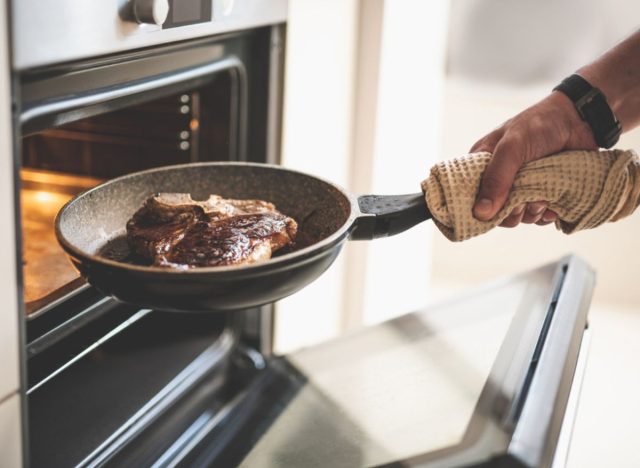
There's a reason why we consider the reverse sear technique the best way to cook a steak; it is far superior compared to the grill!
"You gently bring the steaks close to your final desired doneness (in a low temp oven for example), and then finish with a hard, high heat sear," says Chef Tsarnas. "This helps guarantee an evenly cooked, tender steak with a great crust, without risking overcooking those beautiful pieces of meat you worked so hard on!"
Finish it in a pan.
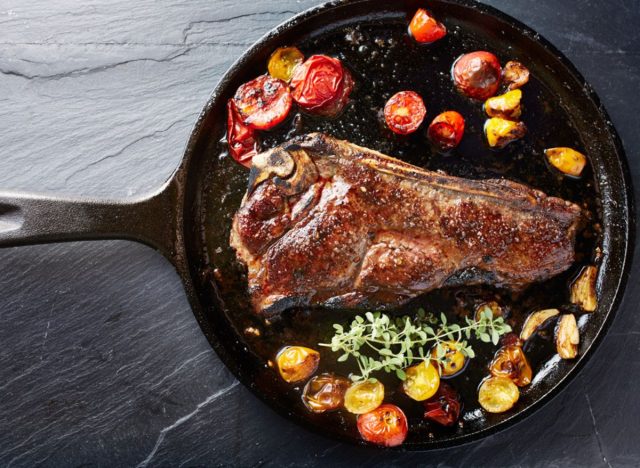
Chef John Tesar, a restaurateur for multiple steakhouses and a recent recipient of a Michelin Star for his work at Knife & Spoon, explains that the flames of the grill can cause the steak to lose its flavor and taste, while a pan can help amplify that flavor.
"By cooking steaks in the pan, the meat's fat isn't lost into the charcoals but instead is preserved and becomes a part of the cooking medium, a powerful agent in building flavor," says Chef Tesar. "Additionally, this technique creates a beautiful crust and browning while never having to worry about burning. The pan can get plenty hot in just a few minutes."
Add in a drizzle of neutral oil before the steak.
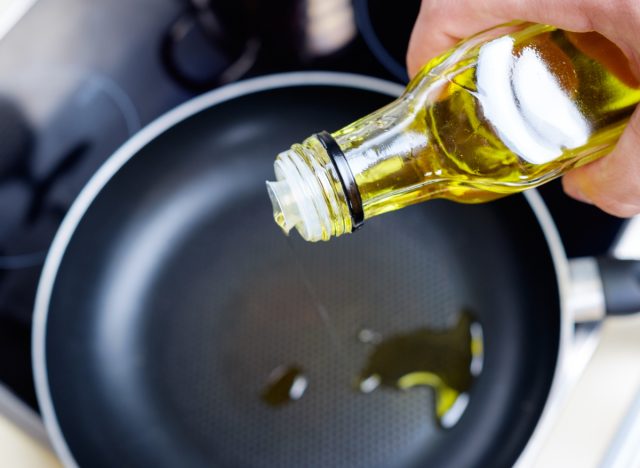
Before placing your steak into the pan, Chef Tesar suggests drizzling a neutral oil in the pan to help get the steak going, such as vegetable or canola oil.
"The oil isn't used for flavor, rather it's the conductor of heat energy to begin cooking the meat," he says. "Avoid starting with butter or olive oil because the low smoke points will burn the fat before the steak is done which causes bitter flavor development."
Sear without fear.
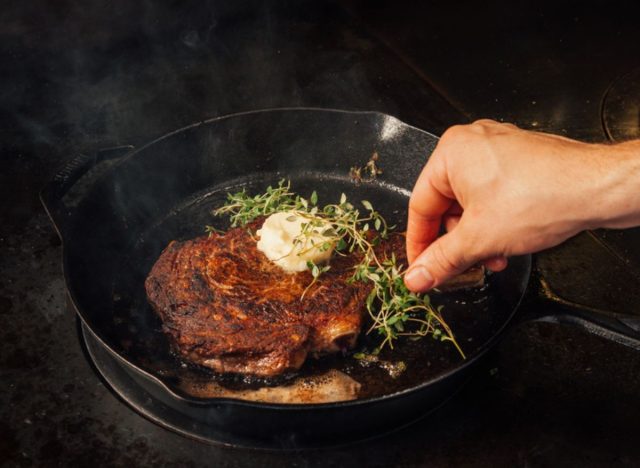
When the pan is ready for that final sear, Chef Reitz encourages you to sear and "let it be."
"Avoid checking or messing with your steak too much," he says. "Trust your timer or instant-read thermometer—cook to a recommended 145 degrees Fahrenheit and flip as little as possible to allow the beef to brown and sear properly without disturbance."
Let the steak rest.
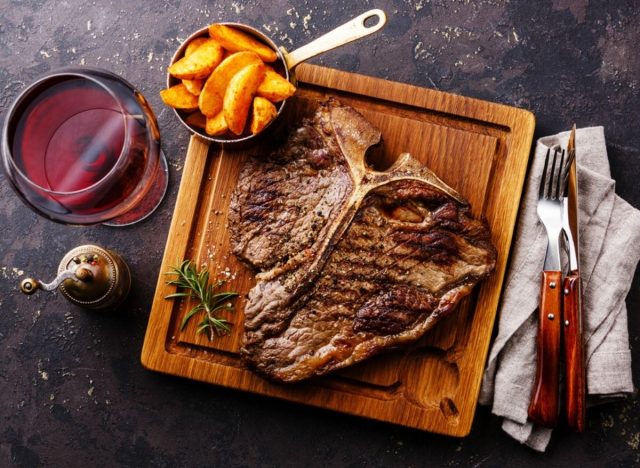
When the steak is done, be sure to let it rest on a plate or cutting board, tended loosely with aluminum foil, before slicing and serving.
"A step many novice cooks overlook," says Chef Reitz. "Allow your meat to rest once it comes off the grill or skillet for 5 to 7 minutes, so the juices absorb into the meat rather than draining onto your plate."
Remember, every cut of meat is different, which means they will need different levels of resting time.
"Large cuts of steak may benefit from some resting, but thinner steaks shouldn't need resting more than a minute or two," says Chef Tesar. "Overall, a steak shouldn't rest more than five minutes in order to avoid carryover cooking."
Are you feeling inspired to cook the perfect steak? Dig into one of these 17 Best Healthy Steak Recipes!
Cut like a pro.
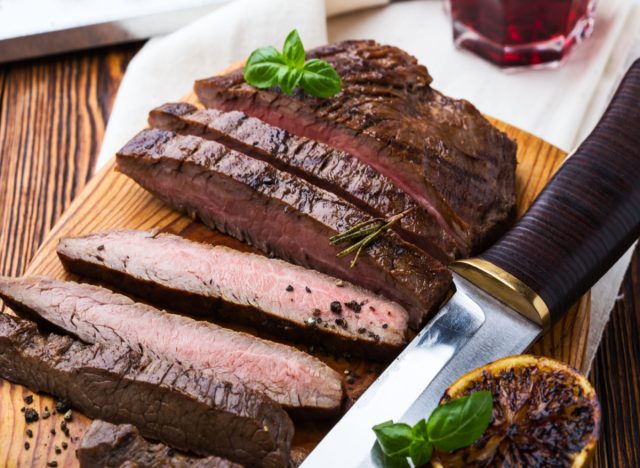
"When slicing your steak, cut across the grain, or perpendicular to the direction of the fibers, to maximize tenderness and minimize chew," says Chef Reitz. "Also, avoid piercing the beef with a fork at any time while carving to prevent additional drainage. Try using tongs to hold it instead while slicing to preserve the juicy goodness!"









